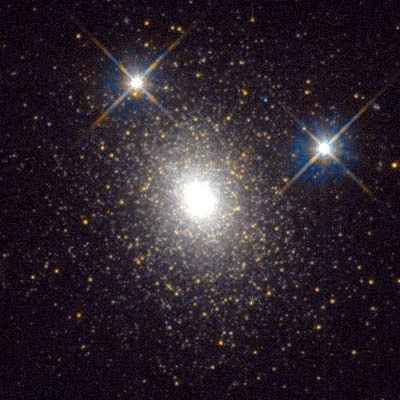

|
|
|
|
|
|
|
created September 1999
 |
| Hubble Space Telescope has captured a view of a globular cluster called
G1, a large, bright ball of light in the center of the photograph consisting
of at least 300,000 old stars.
G1, also known as Mayall II, orbits the Andromeda galaxy (M31), the nearest major spiral galaxy to our Milky Way. Located 130,000 light-years from Andromeda's nucleus, G1 is the brightest globular cluster in the Local Group of galaxies. The Local Group consists of about 20 nearby galaxies, including the Milky Way. The crisp image is comparable to ground based telescope views of similar clusters orbiting the Milky Way. The Andromeda cluster, however, is nearly 100 times farther away. A glimpse into the cluster's finer details allow astronomers to see its fainter helium burning stars whose temperatures and brightness show that this cluster in Andromeda and the oldest Milky Way clusters have approximately the same age. These clusters probably were formed shortly after the beginning of the universe, providing astronomers with a record of the earliest era of galaxy formation. During the next two years, astronomers will use Hubble to study about 20 more globular clusters in Andromeda. The color picture was assembled from separate images taken in visible and near infrared wavelengths taken in July of 1994. With courtesy copied from
|
| back to the page on allegories |
| back to the general analysis of design language |